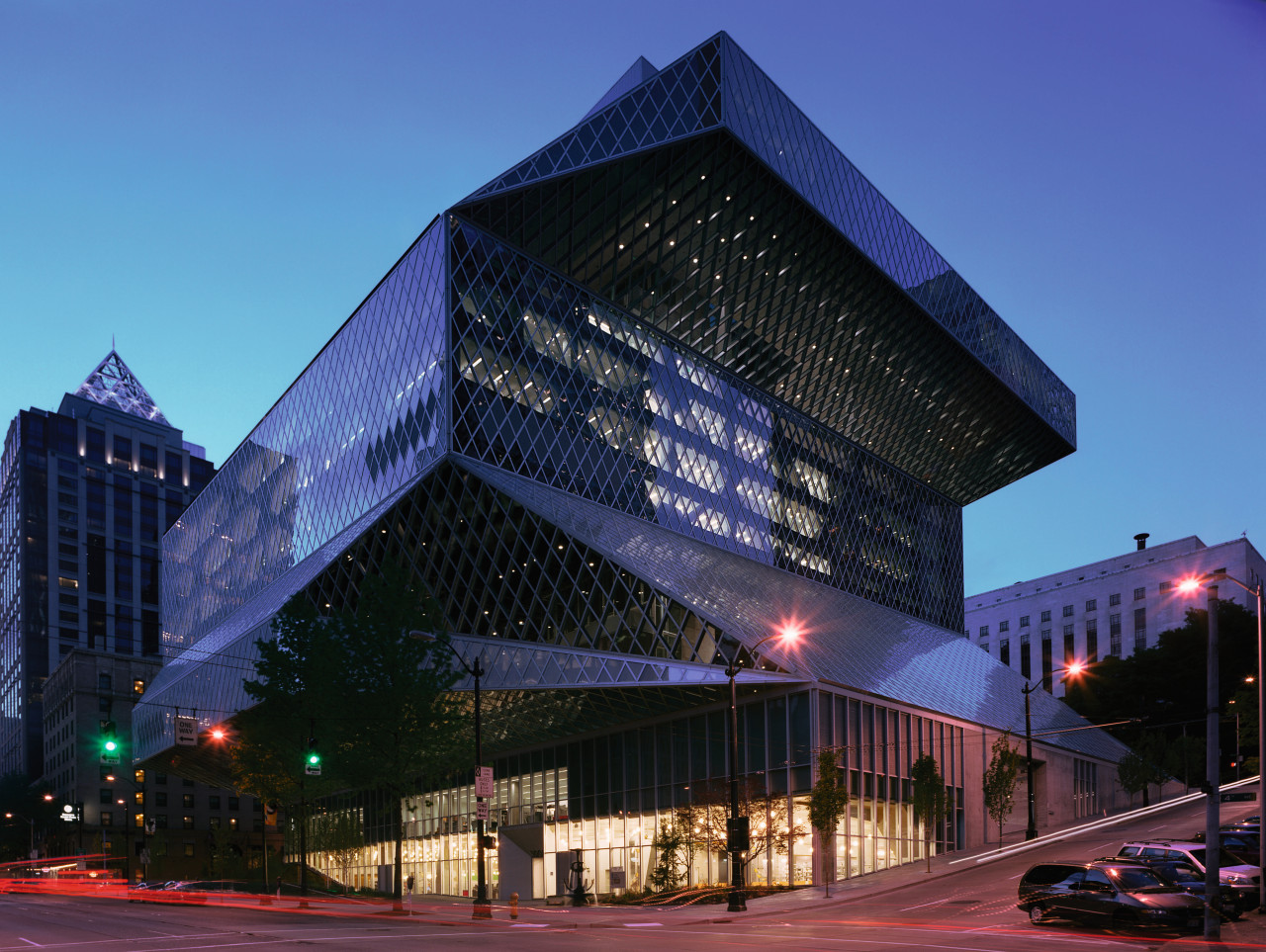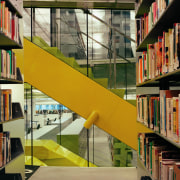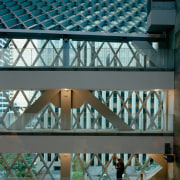Well-read
With its innovative glass and steel construction and bold, easy-to-use interiors, the Seattle Central Library is inspiring local governments world-wide
The picture that springs to mind when the word library is mentioned, is usually one that typifies the public facilities of the past: austere, formal spaces where the emphasis is on what they contain rather than how they're used.
But now, in these design-conscious times, it is recognised that creative design, interactive amenities and a fun environment not only encourage visitors but support learning.
It was with this in mind that Rem Koolhaas and Joshua Ramus prepared a design for the new Seattle Central Library. The Dutch architectural firm OMA collaborated with local company LMN Architecture, to create a library that was not only functional and interesting, but also iconic in nature.
"Its design is totally dedicated to making a great library. Its form is an answer to how it functions," Ramus says.
He refers to the fact that while most buildings have floors that are repetitive in terms of their form and floor plan, the Seattle Library's are purposefully contradictory. In affect, the building has changed shape to meet the needs of each room, rather than the room fitting into a predetermined space.
In constructing the library, 4718 tonnes of steel were used 20 times the weight of the Statue of Liberty. Yet the framework was surprisingly inexpensive, thanks to its multi-purpose uses: it serves as seismic bracing, eliminates the need for interior wallcoverings and reduces energy usage.

Ramus says many of the design solutions, for what seems like a complicated structure, were actually simple. The tilted pillars transfer loads from the jutting platforms to the conventional parking garage columns far below, for example. The size of the diamond windows resulted from calculations of steel, weight and manpower to simplify installation, delivery and crane time.
The 11-storey glass building is open and transparent, so passers-by can see the activity inside. The innovative glass system, which allows this transparency, is the first of its kind in the US. The type of glass used is dictated by its placement. Large areas of solar penetration, for example, have small, triple-glazed panes, while areas in need of natural light have large clear panes. Despite its expanse of glass (11,777m²), the building's shape is irregular, with rooms jutting out over the street. Curved and linear walls exist comfortably alongside each other.
The steel exterior creates a skin for the diverse collection of rooms inside. There are friendly children's rooms, expansive reading areas, bright teen centres and thought provoking artwork. As well of course as space for reading material, although it does only comprise 32% of the total floor space.
The first three levels contain the interactive parts of the library: a children's room, learning centres, teen centre, (food and beverages can be taken from here into research and book areas), an auditorium and exhibition space. Access to these is via two dramatic entrances, the main entry off Fourth Ave, and the Fifth Ave entrance. The latter is accessed through a covered walkway and leads directly into the Norcliffe Foundation Living Room. This vast atrium soars to a height of 12m at its highest point.
Other areas are defined through colour. The children's centre has bright yellow and pink rubber flooring and child-sized poufs; escalators and lifts are an intense green-yellow making them easy to spot; and meeting rooms on level four are connected by blood-red hallways.
Level five accommodates a technology room the mixing chamber with 400 public computers and fire-proofed walls. Its aluminium floor mimics the industrial appearance of the exterior, and is meant to be scratched and become worn over time.

"In time, the reason you will access a library like this will not necessarily be the physical materials or even the technology but the ability to curate information," Ramus says in explanation of this facility.
Levels six to nine are a storage innovation a books spiral which Ramus describes as one of the most unique elements of the building. As book collections increased in the past, they were often split over different rooms or floors, destroying the classification system's logic and making it difficult to browse. The books spiral provides a solution. It stretches over four levels and with a gently sloping floor, allows patrons to move easily throughout the entire collection. There is also enough room for the collection to double to 1.45 million volumes.
"At the bottom of the spiral is 000; at the top is 999," Ramus says. "Dewey numbers are marked on aisle floors and as indicators in the elevators, so it's always directly obvious how to find the books."
The library includes many technological advances. Another first in modern libraries is a system that retrieves returned books from patrons, and by means of embedded computer chips, checks them off the computer system and delivers them, via a conveyer belt, to the appropriate department for re-cataloguing.
However, the past is not forgotten. The brown Worthwood floor with its shades of red and gold, in the level 10 reading room, provides a link to libraries of a bygone era.
The artistic and culturally diverse nature of Washingtonians is represented by specially commissioned art and sculpture placed in key areas. Highlights include the relocated and restored Tsutakawa fountain, by Seattle artist George Tsutakawa, at the Fourth Ave entry. On level one, a maple-wood floor displays 556 lines of reversed text. It consists of the first sentences of books, representing 11 languages and alphabets, found in the World Languages Collection.
Credit list
Engineers
Artists
Environmental graphics
Facade pre-construction services
Interiors
Life safety
Pre-construction services
Acoustic consultant
Cost consultants
Facade
Hardware
Landscaping
Lighting
Vertical transport
Story by: Trendsideas
Home kitchen bathroom commercial design
9 tile shapes and finishes that think outside the square
Reflection and repose
Curves upon curves














